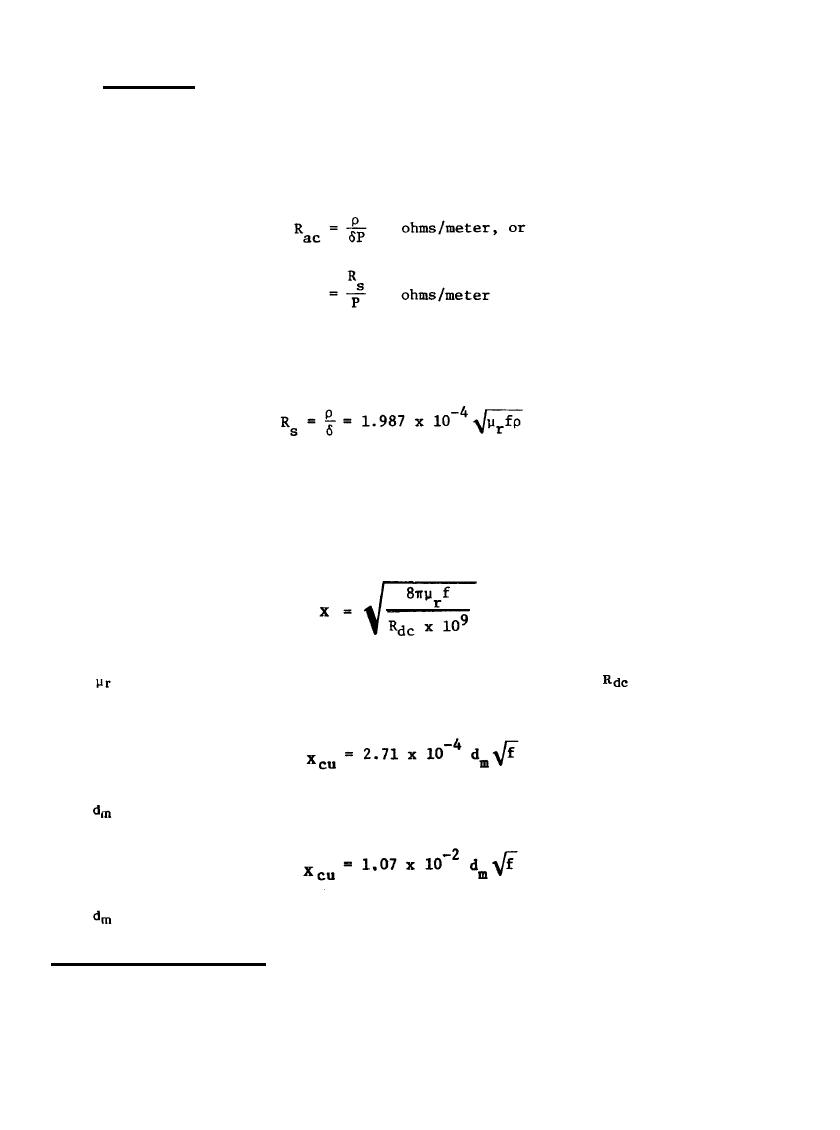

Custom Search
|
|

|
||
 MIL-HDBK-419A
5.2.2.2 AC Resistance.
The ac resistance of a conductor of any shape can be determined from the skin depth if both the thickness and
the radius of curvature of the conductor are much greater than the skin depth and if the radius of curvature
does not vary too rapidly around the conductor's perimeter. For a conductor meeting these conditions, the ac
resistance per unit length is
(5-3)
(5-4)
where P is the circumference of the conductor and Rs is the surface resistance of the conductor. The surface
resistance is defined as the ac resistance of a surface of equal length and width and is given by
(5-5)
The surface resistance for various metals is also shown in Figure 5-1 and Table 5-2.
The ratio of the ac resistance to the dc resistance is called the resistance ratio of a conductor. Skin effect
causes the resistance ratio to be greater than unity. The resistance ratio for straight cylindrical wires is given
in Figure 5-2 in terms of a parameter X defined as
(5-6)
where
is the relative permeability of the conductor, f is the frequency in hertz, and
is the dc resistance
in ohms for 1 cm of conductor.* In the case of copper wire, Equation 5-6 becomes
(5-7)
is the wire diameter in mils, or becomes
where
(5-8)
where
is diameter in mm.
*It should be noted that Equation 5-6 applies at all frequencies, whereas Equations 5-3 and 5-4 apply only under
the conditions stated.
5-5
|
 |
|
 |
||